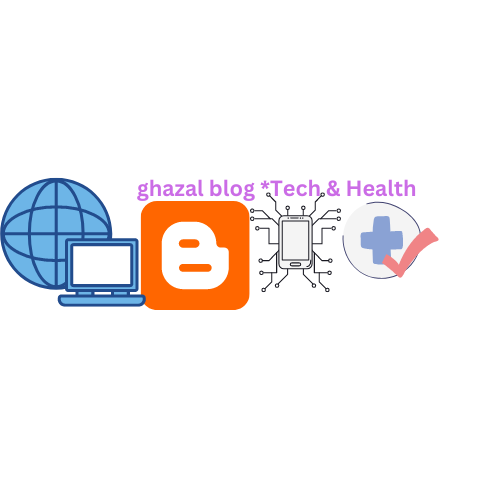A stroke can cripple your existence, avoid it by using knowing the warning signs per week before a stroke.
Many of us
understand that stroke is a lifestyle-threatening disorder. But few could be
aware that people of any age institution can be vulnerable to stroke.
Consistent to the centres for sickness control and Prevention, one individual
in the u.S. Suffers a stroke every forty seconds, and one of these humans dies
in about three and 1/2 mins.
What's a stroke?
In scientific
phrases, a stroke is a blockage of a vessel within the brain or a rupture of a
vein and blood pooling, depriving the final cells of oxygen.
How can a stroke be averted?
The sooner a stroke is stuck, the greater successfully it can be treated and the much less harm to the brain. According to health workers, in case you see any of these symptoms in any individual or in case you sense it in yourself, then consult a health practitioner at once.
Severe headache
Excessive
headache is one of the symptoms of a stroke. In line with cardiologist Sanjiv
Patel, headaches also can be caused by bleeding from a vein within the mind. If
the headache is getting worse and does no longer subside, seek advice from a
doctor right away.
Difficulty respiration
Chest pain is not
the best signal of coronary heart assault but also a signal of stroke. Get
scientific help in case you experience persistent shortness of breath and chest
aches. The face droops on one
facet because of numbness or drooping of the frame.
If a part of your
frame suddenly turns numb or is unable to transport at all, consult a medical
doctor right away. In step with the yank Stroke association, numbness or
tingling in a part of the body is a clear sign. Likewise, in case you
experience your face tilting to one side or problem talking, this is also said
to be one of the signs of paralysis. In line with experts, the blood floating
in the veins linked to your face is affected, therefore the face droops on one
aspect. For which immediate scientific assistance ought to be sought.
Difficulty seeing in a single or both eyes
One of the signs
and symptoms of stroke is visible impairment. In a few cases, the visible
understanding is reduced to some extent, while in a few instances, the affected
person loses vision completely. If you revel in blurred imagination and
prescience, seek advice from your doctor.
Issue swallowing or vomiting
Dysphagia is if you have difficulty swallowing meals. And that is one of the signs and symptoms of a stroke due to the fact for the duration of this time the nerves of your brain lose manipulate and grow to be not able to system how to chew or swallow food.
Other signs of stroke are:
- Forgetting or having issues with knowledge of things
- Issue retaining body stability
- Feeling unsteady while taking walks
- Consistent hiccups
- Intellectual strain and behavioural adjustments
looking for immediate scientific interest as
quickly as any or all of these symptoms seem can keep your lifestyle or that of
a person else.
A stroke, also known
as a cerebrovascular accident (CVA), is a medical emergency that occurs when
blood flow to the brain is interrupted or blocked, causing brain cells to die.
This can lead to long-term disability or even death, making it essential to
recognize the symptoms of a stroke and seek medical attention immediately.
Two main types of strokes:
Ischemic and Hemorrhagic.
Ischemic strokes occur when a blood vessel in the brain is blocked by a clot or plaque buildup, whereas hemorrhagic strokes occur when a blood vessel in the brain ruptures and causes bleeding. Ischemic strokes are the most common type, accounting for approximately 85% of all strokes.
Some of the risk
factors for strokes include high blood pressure, smoking, diabetes, obesity,
and high cholesterol. Age, family history, and previous stroke or heart attack
also increase the risk of stroke. Lifestyle changes such as quitting smoking,
maintaining a healthy weight, and exercising regularly can help reduce the risk
of stroke.
The symptoms of a
stroke can vary depending on the type and severity of the stroke, but they
generally include sudden weakness or numbness in the face, arms, or legs,
especially on one side of the body. Other common symptoms include sudden
confusion or trouble speaking, sudden difficulty seeing in one or both eyes,
sudden dizziness or loss of balance, and severe headache.
If you suspect
that you or someone you know is having a stroke, it is crucial to call
emergency services immediately. The faster a person receives medical attention,
the better their chances of recovery.
In the hospital,
doctors will perform diagnostic tests such as CT scans or MRIs to determine the
type and location of the stroke. Treatment options may include medications to
dissolve blood clots, surgery to repair the damage, or rehabilitation to help
the person regain their physical and cognitive abilities.
Preventing strokes is essential, and lifestyle changes such as eating a healthy diet, exercising regularly, and not smoking can help reduce the risk. If you have any
risk factors for stroke, such as high blood pressure or diabetes, it is
essential to manage them properly.


.png)

.png)
